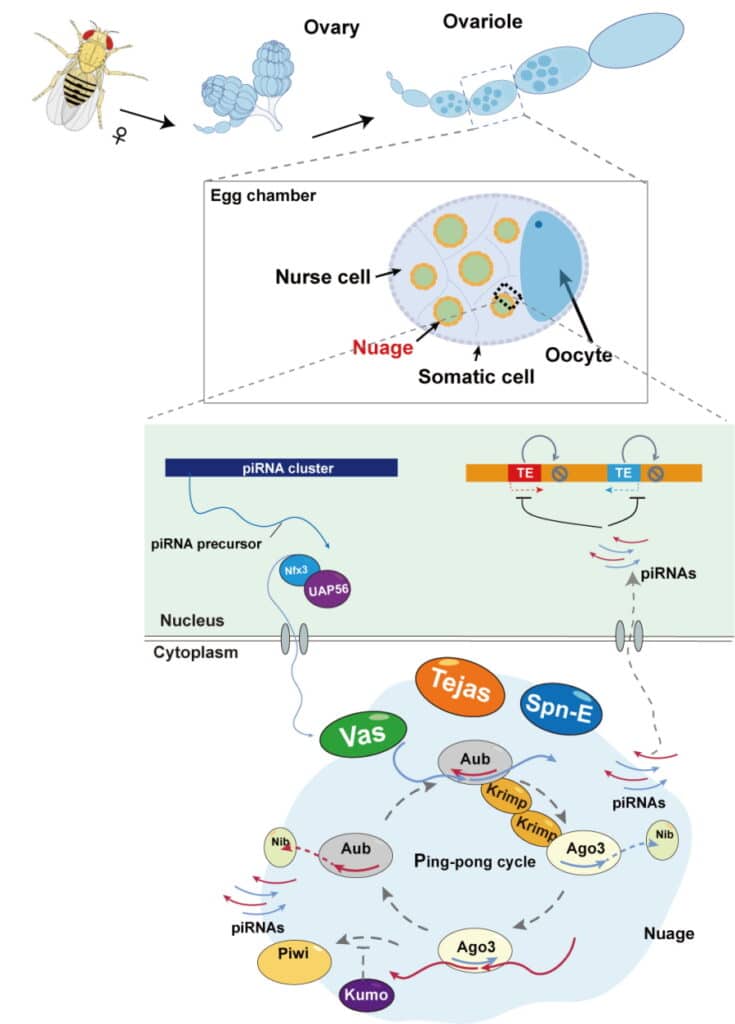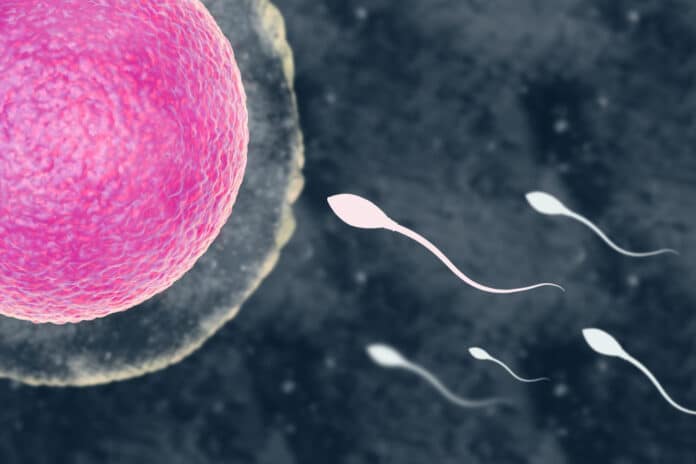Fertility, the ability to have babies, is essential for continuing species. To understand how fertility works, scientists have been studying the role of proteins in this process. Proteins are tiny molecules with many crucial jobs in our bodies, including helping with fertility.
RNA is a tiny molecule that helps make proteins and control genes. A special kind of RNA called piRNA protects our genetic information from changes. Scientists in Japan from Osaka University studied how these special piRNAs are made in fruit flies.
They found that specific proteins, like Tejas, Vasa, and Spindle-E, work together to create piRNAs in the fruit fly’s reproductive cells. These piRNAs are essential because they stop harmful changes in our genes from happening.
In fruit flies, piRNAs start as long pieces, and then they’re changed into shorter functional piRNAs in specific parts of the cell called ‘Nuage.’ Nuage is made by different proteins that help process RNA. Tejas, one of these proteins, is essential for piRNA production. When Tejas is missing, there’s a significant drop in piRNAs.
But exactly how Tejas helps make piRNAs needed to be clarified. So, the researchers wanted to learn more about what Tejas does during this process.
Lead author of the study Lin Yuxuan said, “We first evaluated the detailed function of Tej in the Drosophila ovary and confirmed that Tej is involved in processing precursor transcripts with two RNA-processing helicases: Vas and Spn-E in the Nuage. In the mutant germ cells that lack Tej, we observed that Vas and Spn-E are not properly assembled in the Nuage, indicating that Tej plays a critical role in recruiting Vas and Spn-E to the Nuage.”

The scientists changed parts of a protein called Tej to see which features are essential to work with other proteins. They found that one part helps another protein called Spn-E to stay in a specific place in the cell. Another part affects how another protein, Vas, moves around and how the cell’s components behave.
The study’s leader, Kai Toshie, said that, “Tej is essential for making a place in the ” Nuage ” cell and processing a special RNA called piRNA when Tej brings Vas and Spn-E together, Nuage forms, and piRNA changes into its final, helpful form.”
If piRNA isn’t made correctly, it can lead to problems with having babies. This research might help better understand these problems and lead to new medicines for people with trouble having children.
Journal Reference:
- Yuxuan Lin, Ritsuko Suyama, et al., Tejas functions as a core component in nuage assembly and precursor processing in Drosophila piRNA biogenesis. Journal of Cell Biology. DOI: 10.1083/jcb.202303125.
